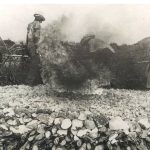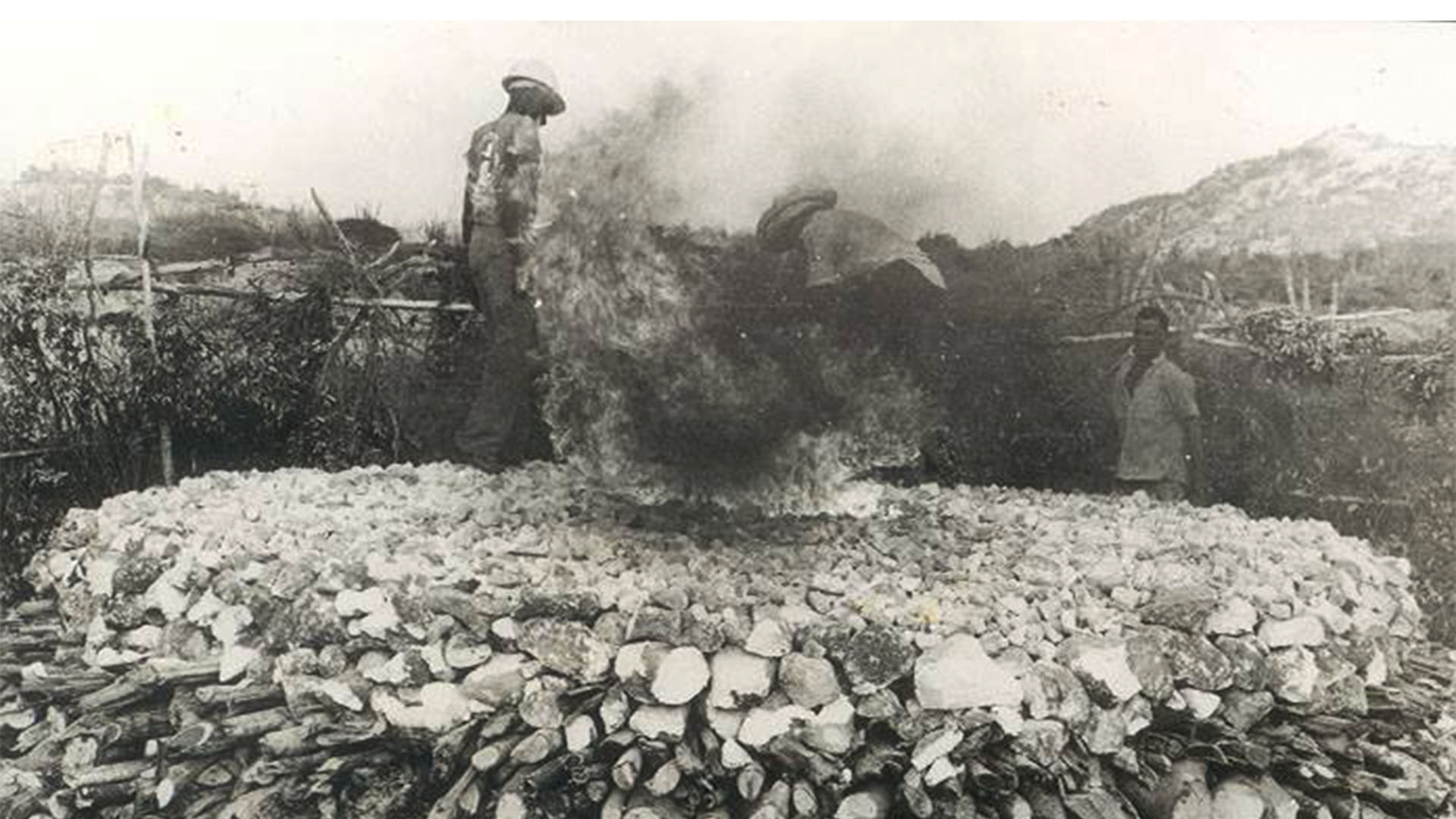Burning of Lime
Burning lime used to be very well known. The lime was used in construction, but also for other purposes such as tanning leather and even for preparing a dead person for burial.
When building a lime kiln, the place where the kiln will be placed must first be raked. After this, a wick is prepared made of flambeu, which is very thin and fine wood that remains when the yatu or kadushi (cacti) has withered, and a termite house. When one is ready, one goes in the woods to chop wood. The most commonly used types of wood for a lime kiln are the palu di Boneiru, palu di sia, palu di kuida and the trunk of a fully grown yatu (cactus).
After this, the wood is placed around the wick. The wood must be cut well so as not to let air through. The shape of the oven is like a spider's house, and when it is burnt out, like a flower.
After this, the stones are placed on the wood. One must pay close attention to how the stones are stacked. If there are too many stones, the fire will not be powerful.
There are two types of stones that are not suitable for building a lime kiln: piedra muhé, because it is too soft; piedra hòmber is too hard. What is called 'krastèn' is the best type of stone for making lime.
When all this is done, it's time to light the oven. But first a shelter must be made with corn trees (palu di maishi) or with leaves of the wayaká or the oliba so that the wind around the oven is not too strong. The oven is lit at the fuse, thus at the top in the middle. The fire than spreads going down.
The lime kiln was lit in the afternoon and left to burn all night. This is to prevent someone from looking at the oven and causing it to shrink. It was also strictly forbidden for pregnant women to walk near the lime kiln. This also will cause the lime to shrink.
You can read more about this in Boneiru di Antaño I p.39 by B. Antoin at archivoboneiru.com

